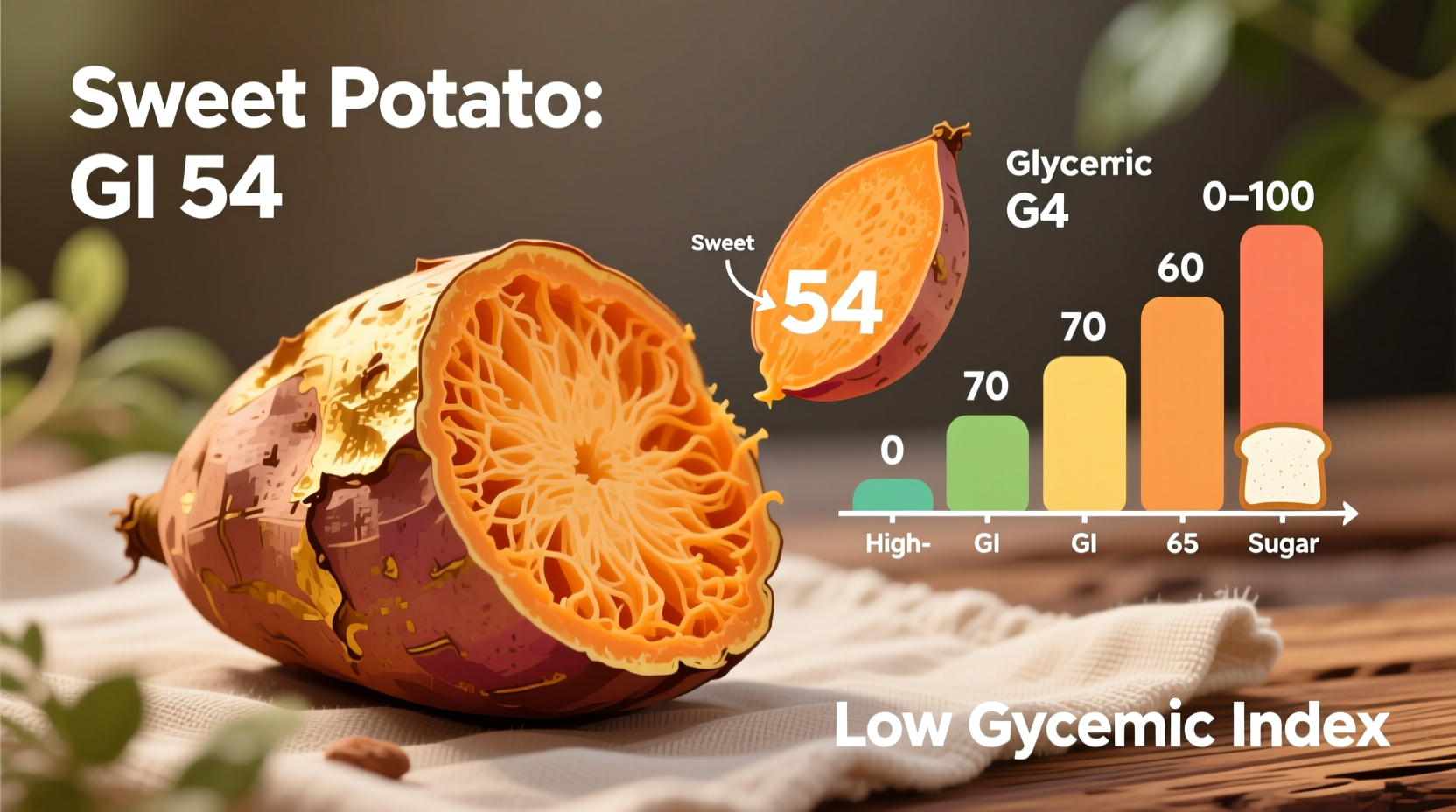Understanding how sweet potatoes affect blood sugar is crucial for anyone managing diabetes or seeking balanced nutrition. Unlike common misconceptions, sweet potatoes aren't inherently "bad" for blood sugar control—their impact depends on multiple factors you can control.
Why Glycemic Index Matters for Sweet Potato Lovers
The glycemic index measures how quickly a carbohydrate-containing food raises blood glucose levels compared to pure glucose (which scores 100). Foods scoring 55 or below are considered low GI, 56-69 medium GI, and 70+ high GI. This measurement helps predict how foods affect blood sugar stability—a critical consideration for metabolic health.
What many don't realize is that sweet potatoes demonstrate remarkable variability in their glycemic response. That same tuber can transform from a blood sugar-friendly option to a glucose spike trigger based on simple preparation choices. Let's examine what determines where your sweet potato falls on this spectrum.
Sweet Potato Varieties and Their Glycemic Impact
Not all sweet potatoes behave the same way in your bloodstream. The variety you choose creates the foundation for its glycemic response:
| Sweet Potato Variety | Preparation Method | Glycemic Index | Glycemic Load (per 100g) |
|---|---|---|---|
| Orange-fleshed (Boiled) | Boiled 30 minutes | 44-46 | 11 |
| Orange-fleshed (Baked) | Baked 45 minutes | 94 | 42 |
| Purple-fleshed | Boiled | 51-57 | 15 |
| White-fleshed | Boiled | 58-62 | 18 |
Source: American Journal of Clinical Nutrition and USDA FoodData Central
This dramatic difference between boiled and baked orange sweet potatoes (nearly doubling the GI value) reveals why preparation method matters more than the vegetable itself. The baking process breaks down complex carbohydrates into simpler sugars more rapidly digestible by your body.
How Cooking Transforms Sweet Potato Glycemic Response
The transformation during cooking explains these dramatic GI shifts. When you apply heat to sweet potatoes:
- Boiling causes water absorption that preserves more resistant starch—carbohydrates that resist digestion and function like fiber
- Baking concentrates natural sugars through moisture loss while gelatinizing starch for faster digestion
- Cooling after cooking increases resistant starch content by up to 50% through retrogradation
Research from the Harvard T.H. Chan School of Public Health confirms that cooling cooked sweet potatoes in the refrigerator for 24 hours before eating significantly reduces their glycemic impact while boosting resistant starch content.

Sweet Potatoes vs. Regular Potatoes: A Blood Sugar Comparison
When comparing sweet potatoes to regular white potatoes, the differences in blood sugar impact become striking:
- Boiled white potato: GI 82, GL 21 (per 100g)
- Baked Russet potato: GI 111, GL 33 (per 100g)
- Boiled sweet potato: GI 44-46, GL 11 (per 100g)
Despite containing similar carbohydrate amounts, sweet potatoes generally produce a more gradual blood sugar rise—especially when boiled rather than baked. The higher fiber and moisture content in sweet potatoes contributes to this slower digestion pattern.
Practical Strategies for Blood Sugar-Friendly Sweet Potatoes
You don't need to eliminate sweet potatoes from your diet—even if managing diabetes. Implement these evidence-based strategies:
- Choose boiling over baking: Boiling preserves more resistant starch that slows glucose absorption
- Cool before eating: Refrigerate cooked sweet potatoes for 24 hours to increase resistant starch by up to 50%
- Pair with protein and fat: Combine with chicken, fish, or olive oil to further slow digestion
- Keep portions moderate: Stick to ½ cup (75g) servings for better blood sugar control
- Choose purple varieties: Their anthocyanins may improve insulin sensitivity according to American Diabetes Association research
Special Considerations for Diabetes Management
If you're managing diabetes, sweet potatoes can still fit into your meal plan with strategic planning. The American Diabetes Association recommends focusing on glycemic load (GL) rather than GI alone, as GL accounts for typical serving sizes.
Boiled sweet potatoes have a moderate GL of 11 per 100g, making them manageable within carbohydrate-controlled diets. For comparison, white bread has a GL of 25 per 100g. The key is proper portion control and preparation method—never judge a carbohydrate solely by its GI number.
Debunking Common Sweet Potato Myths
Several misconceptions persist about sweet potatoes and blood sugar:
- Myth: All sweet potatoes are high GI foods
Truth: Boiled orange sweet potatoes have a low GI (44-46), comparable to lentils - Myth: Sweet potatoes will spike blood sugar like white potatoes
Truth: Properly prepared sweet potatoes create a more gradual blood sugar curve - Myth: Diabetics should avoid sweet potatoes completely
Truth: When prepared correctly and portioned appropriately, they can be part of diabetes-friendly eating patterns
Creating Balanced Sweet Potato Meals
The most blood sugar-friendly sweet potato meals combine strategic preparation with complementary ingredients:
- Breakfast option: Chilled boiled sweet potato cubes with Greek yogurt, walnuts, and cinnamon
- Lunch option: Sweet potato and black bean salad with lime vinaigrette and avocado
- Dinner option: Roasted salmon with boiled and cooled sweet potato slices and steamed broccoli
These combinations leverage protein, healthy fats, and fiber to create meals with balanced glycemic responses—proving that smart food pairing matters as much as the ingredients themselves.
Final Thoughts on Sweet Potatoes and Blood Sugar
Sweet potatoes deserve their place in balanced diets when prepared thoughtfully. Their nutrient density—packed with vitamin A, potassium, and fiber—makes them superior to many refined carbohydrates. By choosing boiling over baking, cooling before eating, and controlling portions, you transform sweet potatoes from potential blood sugar disruptors into metabolic allies.
Remember that individual responses vary—monitor your blood glucose after trying new preparations to understand your personal tolerance. The goal isn't elimination but intelligent incorporation of this nutritious vegetable into your eating pattern.











 浙公网安备
33010002000092号
浙公网安备
33010002000092号 浙B2-20120091-4
浙B2-20120091-4